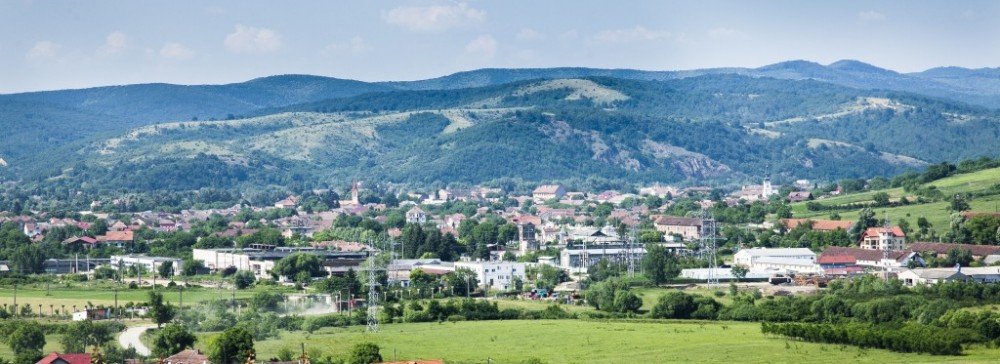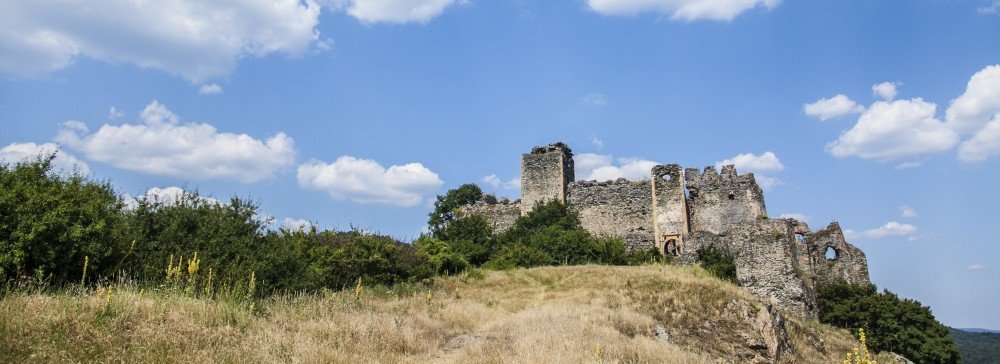The Soimos Fortress is situated on the right bank of Mures River, across Lipova, on the hill known as Cioaca Tautului. It was built after the first Tartar invasions in the area and is mentioned in documents since 1278. The Soimos Fortress is on the list of historical monuments, code LMI AR-II-a-A-00618.
The fortress was built by a noble family at the end of the 13th century. The first certification documentary dates from the year 1278, when ban Pal donates “Castrum Somos” to his brother’s sons. Its role has constantly grown starting with voivode Ladislau Kan the 2nd, who ruled the fortress through two intermediaries: Alexandru (1310) and Dominic (1311). After 1315, it becomes royal property, being the residence of Arad representatives.
Towards the middle of the 15th century, it is being donated successively, passing through the hands of several owners, finally King Vladislav I donates it to the Orszag family (1440 – 1444). In 1456, Iancu de Hunedoara took possession of the fortress, who then gave it to the Czech Hussite captain Jan Giskra in 1471.
In 1509 the fortress and its lands became the possession of Gheorghe Hohenzollern of Brandenburg, who exploited them at the most. It is besieged in 1514 by the Romanian and Hungarian rebels lead by Gheorghe Doja. After a short resistance, the garrison of the fortress led by voivode of Ciuci, rebel against Gheorghe Hohenzollern’s men and join the rebels. According to tradition, the rebels ‘camp was set closely, on the Cioilor Hill. In 1541, when Transylvania became an autonomous principality, Soimos was the residence of the Prince minor, Ioan Sigismund and his mother, Queen Elisabeth. In this period, the fortress is reinforced and decorated in the Renaissance style, at that time also being raised the external bastions. In the courtyard, even nowadays, one can see stone carved artistic profiles, from the princely apartments located upstairs.
The Turks conquered the fortress in 1552, after repeated sieges, and in 1594, Stefan Bathori’s captain, Borbely Gyorgy, reconquered it and it came in custody of Transylvania’s rulers. Moise Secuiul – leader of the struggle of resistance against Austrian occupation, impersonated by the general Gheorghe Basta – after he was defeated near Teius in 1602, took refuge in Soimos Fortress. Considering this settlement much more uncertain, he entered into an exchange pact with pasha Bektas from Timisoara, gave up the fort in exchange for the fortress in Kladovo. In 1599 – 1600, it passed on under the command of Mihai Viteazul. The fort was finally released under Turkish domination only in 1688. Damage during and after the siege have never been remedied, the fortifications being completely neglected. Neither for conservation has ever been taken measures. In the 18th century it gradually loses its military importance, as a result of improving the artillery. In 1784, close to the fortress, the rebels lead by Horia clashed with the imperial and noble forces. Abandoned in 1788, its walls gradually turned into ruins. In recent years, some works were carried out to strengthen the walls.
Invalid Displayed Gallery







